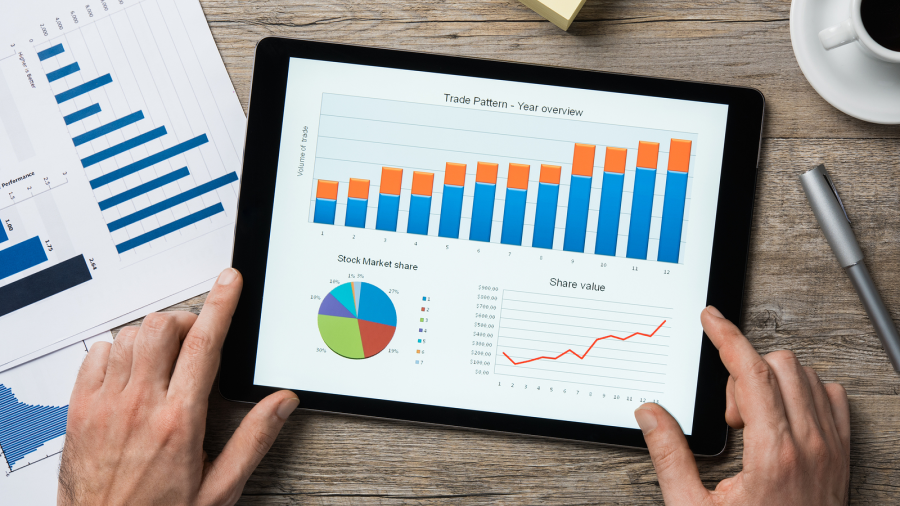Personal Wealth Management / Market Analysis
The Equity Market’s Rational Rise
Global equity markets aren’t out of touch with economic fundamentals, in our view.
In recent days, a new presumption has quietly gained steam amongst financial commentators we follow: Rising equity markets, they warn, are increasingly detached from a faltering economic recovery in America and Europe. Sure, most flagship economic indicators are still doing well, but slowing real-time data (e.g., American restaurant bookings), supply shortages and the Delta variant have forecasters on edge. The implication: Euphoric markets are ignoring bad news and in for a rocky road once they become wise to reality. In our view, this misunderstands how markets work, and even if the recovery does take a breather for whatever reason, it doesn’t automatically render rising markets irrational.
For one, to presume equities should do X if near-term indicators do Y misunderstands how markets work, in our view. Economic data, no matter how timely, are backward-looking. Any given indicator reflects what happened last week, month or quarter, depending on the statistic. Markets, however, are forward-looking. Our research indicates they generally look about 3 – 30 months out. Their focus within that span isn’t the precise economic trajectory, according to our findings, but whether the economic and political landscape in general look likely to keep corporate profits generally better or worse than the broad universe of investors expected. If economic data in the here and now wobble a bit, that could very well rein in expectations, making it easier for reality to beat—and fueling equity returns.
We do think it is generally true that bear markets often begin when euphoric investors overlook deteriorating economic conditions. But we think that is generally about forward-looking economic indicators, not coincident and lagging data. For instance, if equities were notching new highs whilst the US, UK and other major nations’ yield curves were inverted, that could mean trouble ahead. The yield curve is a graphical representation of a single issuer’s interest rates, ranging from short to long. If it is inverted, that means short rates exceed long, which we have found often leads to tighter credit and economic contraction. Additionally, if the Conference Board’s Leading Economic Indexes were dropping and the new orders components of Purchasing Managers’ Indexes were contracting, we think that would be a strong signal that it is time for investors to take a cold, hard look around them. It wouldn’t be a call to immediate action, in our view, as getting out of the market is one of the biggest risks investors needing equity-like returns to reach their goals can take. That is why we generally think it is beneficial to wait at least three months after a peak to take action, lest you move hastily and miss more bull market if you are incorrect. But that sort of disconnect is something we would think it wise to watch very, very closely during that three month window.
Today, it isn’t forward-looking indicators that have financial commentators warning of trouble. The Conference Board’s Leading Economic Indexes for the US and other major nations are rising. According to business surveys from IHS Markit, new orders continue piling up faster than companies can fulfill them—that brings some headaches, given supply chain issues tied to reopening and new lockdowns in Asia, but it does point to growth. Yield curves may be flattish, but they aren’t inverted globally.[i] Simply put, today’s backdrop doesn’t look contractionary to us.
Then too, the things financial commentators cite as evidence of a weakening economy don’t really pass muster, in our view. Take the aforementioned American restaurant bookings, which are down over the past month according to OpenTable. We think teal-time indicators like this were helpful in February and March 2020, as they gave the first look at how lockdowns were hitting commerce, but that was because lockdowns were so sudden and unexpected that everyone was left reeling and fumbling in the dark for data. Those conditions don’t really apply now, in our view.
Plus, the vast majority of these indicators aren’t seasonally adjusted. Late August is back-to-school season in America, and it seems fairly logical to us that with summer ending and children returning to homework and early bedtimes, families would be going out less. We also have long thought economic growth was likely to slow once pent-up consumers unleashed that initial burst of stored-up demand as lockdowns eased. Why is always harder to pin down than what, but suffice it to say, we think it is a stretch to say the Delta variant is the only thing driving slower activity right now. Even if it is, we think data from the past 18 months show biggest economic impact came from the lockdowns implemented in reaction to COVID, not the virus itself. There remains little indication that a return to those dark days is looming, and warnings otherwise have proven false since last summer.
As for the supply shortages, those will probably continue hitting factory output in the affected industries. The jump in shipping costs will likely also affect profits. But these issues aren’t brand new—they have been a thorn in the manufacturing sector’s side for months now, based on all the industry reporting we have seen. They are likely baked into earnings expectations, based on the abundant press coverage. Therefore, we think it would be very weird if share prices didn’t already reflect them. Markets’ continually rising while some businesses are having logistical problems doesn’t mean equities are out of touch. Rather, we think it means they have assessed the situation and determined that profitability over that 3 – 30 month window won’t suffer as much as many commentators allege.
When in doubt, we think it is most beneficial to trust the market. If you can’t see a valid, forward-looking reason for trouble that no one else is talking about, then we think the overwhelming likelihood is that the reigning fears are false, extending the proverbial wall of worry equity markets climb.
Get a weekly roundup of our market insights.
Sign up for our weekly e-mail newsletter.

See Our Investment Guides
The world of investing can seem like a giant maze. Fisher Investments UK has developed several informational and educational guides tackling a variety of investing topics.





